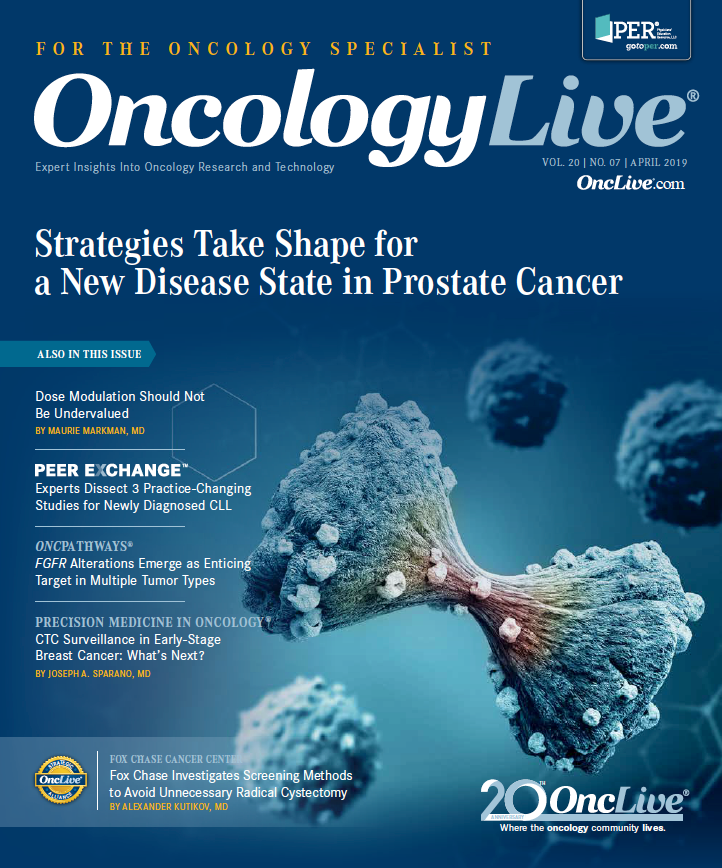Dose Modulation Should Not Be Undervalued in Oncology
Considering the decades of clinical investigation involving cytotoxic therapy of malignant disease, it is remarkable— even disconcerting—just how little is understood about the optimal delivery of this critical cancer treatment strategy.

Maurie Markman, MD
The ongoing revolution in our understanding of the fundamental biology of cancer has resulted in truly impressive advances in treatment and strategies to optimize clinical outcomes. Further, repeat tumor sampling or obtaining liquid tumor biopsies over the natural history of an individual’s cancer may provide critically relevant data about mutational events leading to drug resistance. In turn, this information will increasingly permit far more efficacious decisions regarding second and later lines of antineoplastic drug therapy.
In addition, after decades of false hope, we have finally successfully introduced immune modulation into standard-of-care cancer therapy. Several immunotherapeutic strategies are beginning to substantially change both short- and long-term outcomes in multiple clinical settings.
Despite the palpable progress in the development of novel systemic cancer therapeutics, there remains a critical role in many cancers for long-established cytotoxic chemotherapeutic regimens. For more than half a century, clinical investigators have focused on the search for both individual agents and safe, effective combinations as primary therapy (adjuvant, metastatic, neoadjuvant treatments) and for advanced-stage disease; still, it would be difficult to conclude that, in most settings, optimal management with cytotoxics has been completely defined.
For example, what may appear to be rather simple regimen-specific questions cannot be definitively answered; in fact, the response provided by experts is far more likely to be opinion than a solid evidence—based conclusion: When is the optimal time to begin cytotoxic chemotherapy following “definitive” surgery to ensure the best opportunity for a favorable survival outcome (progression free and overall)? Does delaying drug therapy beyond a stated time (eg, 21-28 days following surgery) reduce the effectiveness of treatment because of growing cancer, or will such delay permit a more complete recovery and allow a patient to better tolerate the anticipated toxic effects of the agents?
Even more vexing is the question of how optimal dose and required dose reductions, resulting from observed or anticipated adverse effects (AEs), will affect survival. Added to this issue is the uncertain need to attempt to maintain dose/dose intensity to optimize the chance for the “best possible clinical outcome” for an individual patient receiving antineoplastic therapy. Should bone marrow colony-stimulating growth factors be used prophylactically or only when severe bone marrow suppression has been demonstrated, or should the prescribed dose simply be reduced, with subsequent cycles and growth factors studiously avoided unless essential for patient safety?
Considering the decades of clinical investigation involving cytotoxic therapy of malignant disease, it is remarkable— even disconcerting—just how little we understand about the optimal delivery of this critical cancer treatment strategy.
Unfortunately, most peer-reviewed published research efforts examining the impact of dose, treatment delays, dose reductions, and strategies to maintain dose intensity are retrospective in nature; if they are prospective, they involve a very specific chemotherapy regimen in a well-defined clinical setting, making it difficult to draw meaningful, generalizable conclusions. Further, in all retrospective analyses, there is the well-recognized serious risk of selection bias in the population of individuals where treatment was or was not delayed, or where dose was or was not maintained.
Consider, for example, the now-classic retrospective observation, reported more than 35 years ago by Bonadonna and Valagussa, which suggested that patients with breast cancer who received “greater than or equal to 85% of the planned dose” of the scheduled 12 cycles of adjuvant CMF (cyclophosphamide, methotrexate, fluorouracil) experienced a significantly lower risk of relapse compared with patients who received “less than 65% of the planned dose.”1 Unfortunately, despite these strongly stated conclusions that maintaining dose intensity may help optimize the chances for a favorable survival outcome, the analysis is simply objectively not helpful in demonstrating that benefit.
What is, essentially, never clearly known in such retrospective reviews of medical records or trial results is why therapy failed to be delivered as planned. For example, some patients may have developed subclinical evidence of progression of their cancer, resulting in fatigue or other nonspecific symptoms that prevented them from receiving therapy or necessitated dose reductions due to the experienced AEs. Alternatively, other patients with existing or newly developed comorbid conditions (eg, cardiac, pulmonary dysfunction) may have experienced unacceptable treatment-related toxicity requiring dose reductions, and, in an unknown percentage of these individuals, the nonmalignant conditions may have substantially contributed to or been the direct cause of premature death.
Again, in a retrospective analysis, it is difficult to fully understand the justifications for changes in dose or schedule and the specific impact of these modifications on the natural history of the cancer in an individual patient. Therefore, it is a serious error to assume that a reported superior outcome is a direct result of maintenance of dose or dose intensity of the planned chemotherapy. Further, and of major significance, it is a potentially dangerous approach to disease management to blindly adhere to a mantra that, regardless of the toxicity they experience, patients with cancer need to receive a specific chemotherapy regimen based on their height, their weight, and the declared established management algorithm.
In advanced ovarian cancer, for example, several randomized phase III trials have explored the relevance of platinum-dose intensity and failed to demonstrate a benefit from the more intense regimens, despite the anticipated far less favorable toxicity profile of the more aggressive approaches.2 However, such data do not stop efforts to retrospectively analyze clinical trial experiences, and these have the potential to discourage toxicity-based dose modifications that may benefit patients.3
It would be most unfortunate if individual clinicians conclude that such results imply a need to maintain dose intensity despite excessive AEs experienced by an individual with ovarian cancer.
References
- Bonadonna G, Valagussa P. Dose-response effect of adjuvant chemotherapy in breast cancer. N Engl J Med. 1981;304(1):10-15. doi: 10.1056/NEJM198101013040103.
- Markman M. Pharmaceutical management of ovarian cancer. Drugs. 2008;68(6):771-779. doi: 10.2165/00003495-200868060-00004.
- Olawaiye AB, Java JJ, Krivak TC, et al. Does adjuvant chemotherapy dose modification have an impact on the outcome of patients diagnosed with advanced stage ovarian cancer? An NRG Oncology/Gynecology Oncology Group study. Gynecol Oncol. 2018;151(1)18-23. doi: 10.1016/j.ygyno.2018.07.021.




